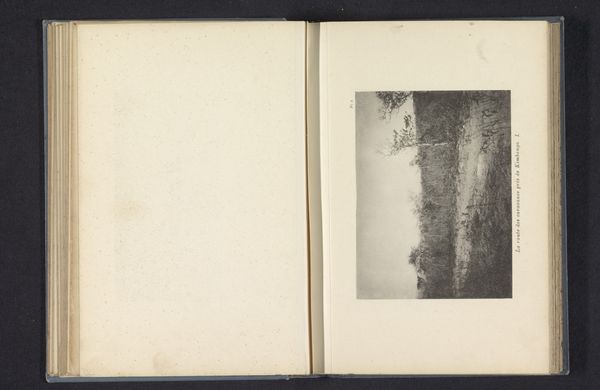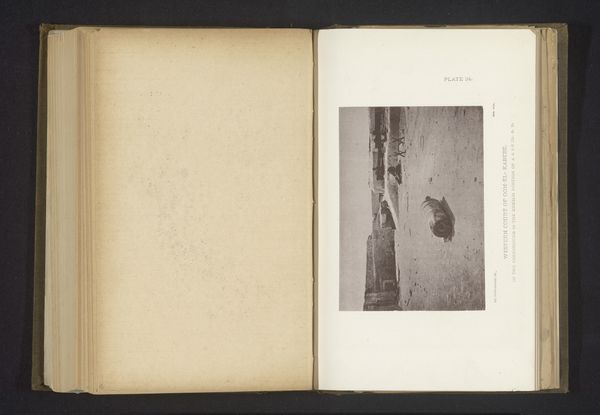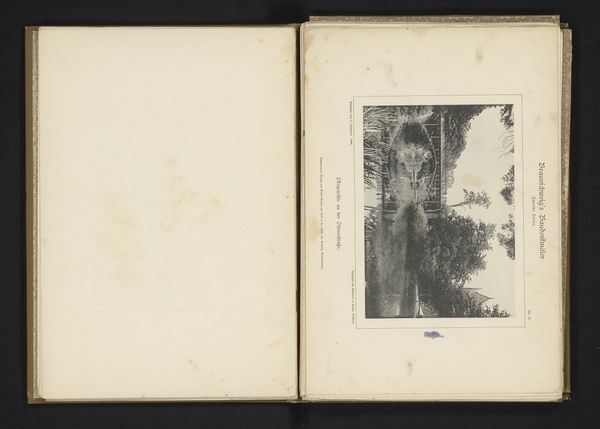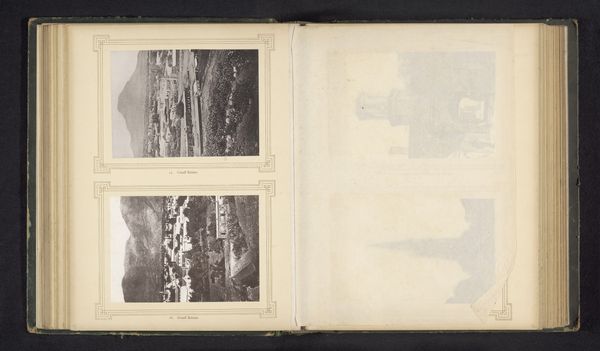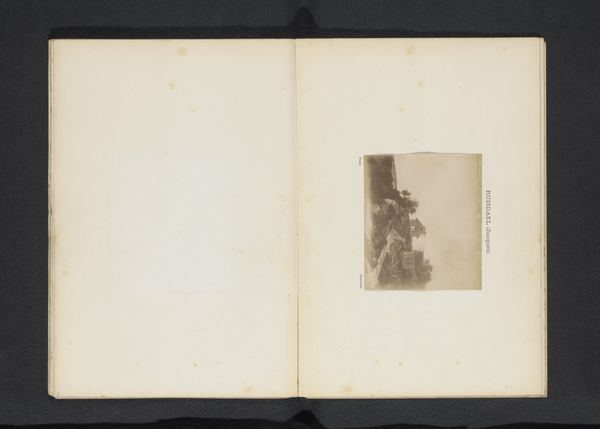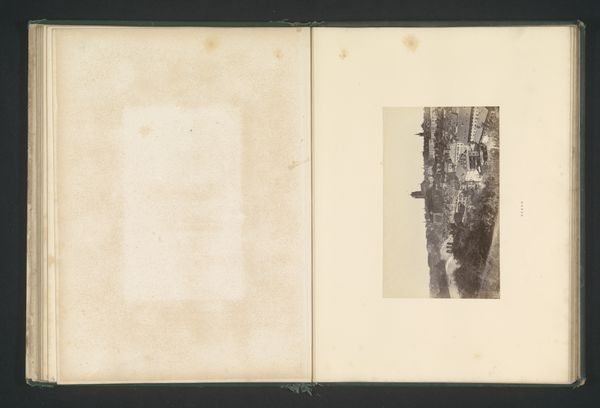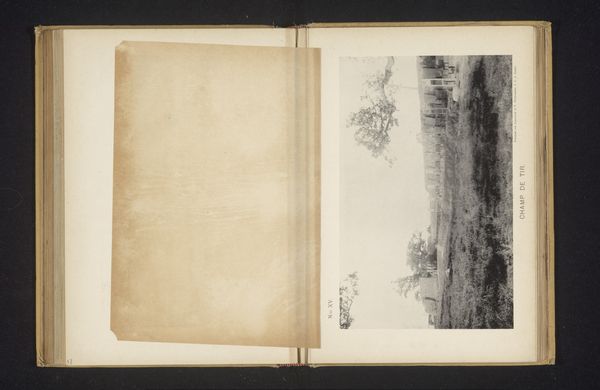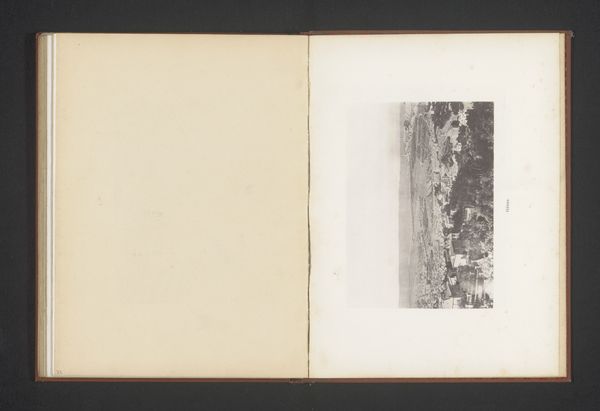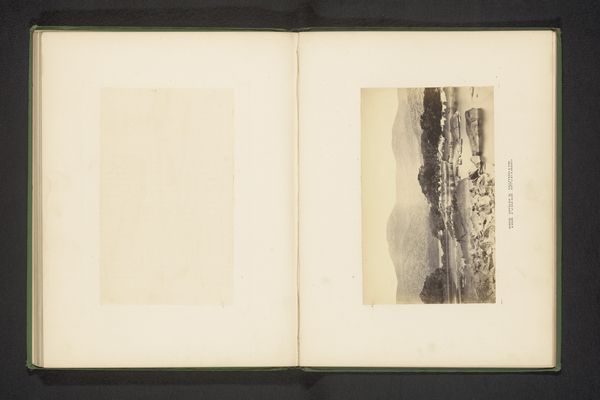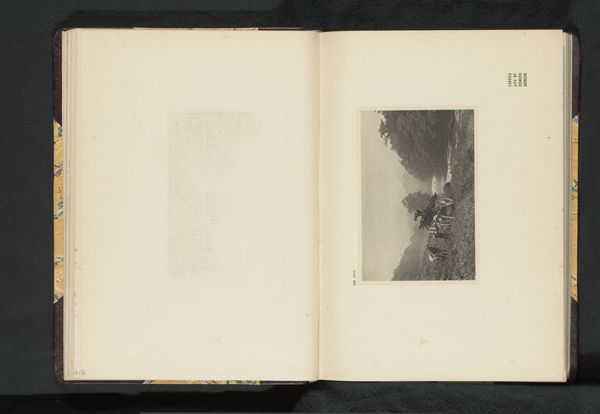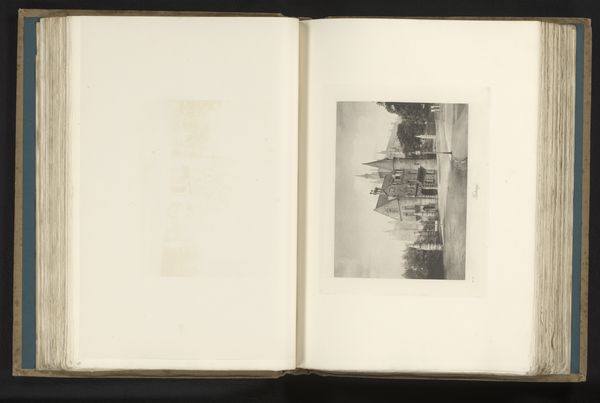
print, photography, gelatin-silver-print
# print
#
impressionism
#
landscape
#
photography
#
gelatin-silver-print
Dimensions: height 109 mm, width 142 mm
Copyright: Rijks Museum: Open Domain
Editor: This gelatin-silver print from before 1888, titled “Verschillende boten te water” by Detaille Frères, has this faded, dreamy quality. I'm curious about the cluster of boats—it's hard to make out distinct forms. What catches your eye when you look at this print? Curator: Ah, yes. Immediately I'm drawn into this nostalgic reverie. Notice how the sepia tones aren't just a byproduct of age, but evoke the *feeling* of looking back. For me, the boats become almost like figures in a dream, their outlines softened, their purposes almost...forgotten. It makes you wonder about the lives of the people in those boats. Were they fishermen returning home, or perhaps just leisurely enjoying a day on the water? The vagueness, the slight blurring... it's a visual echo of memory, don't you think? Editor: That’s beautiful – a visual echo of memory. It does seem like the details are less important than the overall atmosphere, almost like an impressionistic painting, despite it being photography. Is that intentional, do you think? Curator: Precisely! It invites contemplation more than detailed observation. Consider the choice of using a gelatin-silver print – a relatively new medium at the time. Did the artists select it because of the softness it lends to the image, a way to subtly nudge photography away from mere documentation toward a more…artistic interpretation? It really tickles the imagination, doesn't it? Editor: Absolutely. I never considered the medium contributing to that ambiguity. It feels more deliberate now, less like an accident of time. Curator: Exactly! And doesn’t that deepen the experience? We’ve gone from seeing boats on water, to contemplating memory itself! Editor: It certainly does. I’ll never look at an old photograph the same way.
Comments
No comments
Be the first to comment and join the conversation on the ultimate creative platform.
